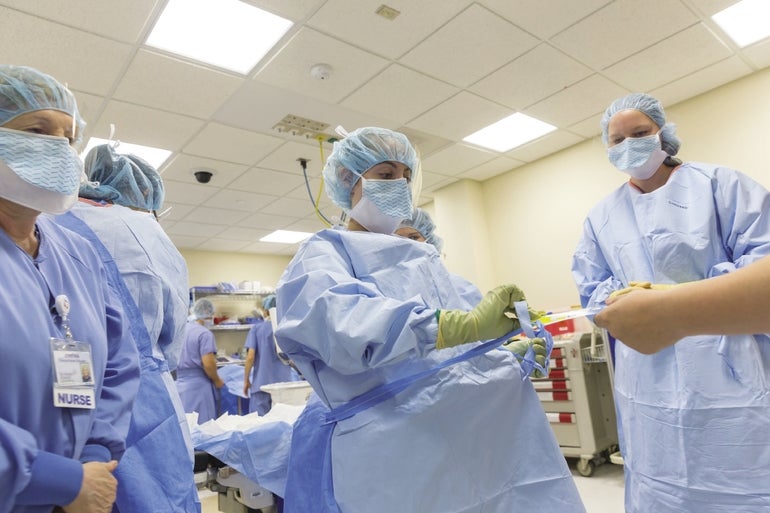The COVID pandemic exacerbated the long-held problems in health care. Things won’t get better in 2023.
Get Instant Access to This Article
Subscribe to Worcester Business Journal and get immediate access to all of our subscriber-only content and much more.
- Critical Central Massachusetts business news updated daily.
- Immediate access to all subscriber-only content on our website.
- Bi-weekly print or digital editions of our award-winning publication.
- Special bonus issues like the WBJ Book of Lists.
- Exclusive ticket prize draws for our in-person events.
Click here to purchase a paywall bypass link for this article.
The healthcare sector was under strain before COVID hit in 2020, but since then the industry’s flaws have been exposed. The cracks continue to expand. Health care is Central Massachusetts’ fourth biggest industry by economic output and its largest employer, and right now it’s under immense pressure.
Hospitals will continue to be overwhelmed
The onslaught of patients will not end for hospitals. If it’s not COVID-19, it’s RSV or the flu or chronic illness. Beds are on short supply, and it’s only getting worse. Hospitals are stretched thinner now than anytime during the highs of the pandemic. That won’t stop as more people in the Baby Boomer generation age and need care. The healthcare system in America isn’t set up for this and can’t handle it unless something changes.
Expect more strikes
With the deluge of patients, hospital staff are wearing out. Expect those who work on the front lines to keep demanding more of their employers. A set of new contracts for nurses at UMass Memorial Health should ease some burden, but don’t expect that to solve everything. Other workers who help make hospitals go are beginning to get agitated. Look no further than the Teamsters Local 170, which barely avoided a planned Dec. 26 strike by reaching a tentative agreement with Saint Vincent Hospital in Worcester after nine months of negotiations.
Homeless population will need help
In June, the Central Massachusetts Housing Alliance reported the homeless population in Worcester County had risen nearly 50%, and the trend showed no signs of slowing down, as housing costs rise and service providers meant to help them, such as shelters, run low on resources.

